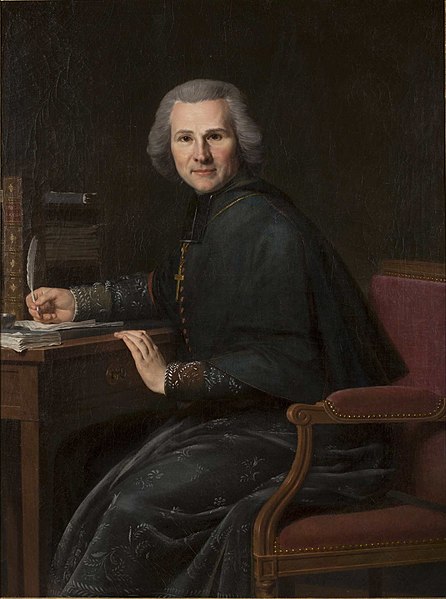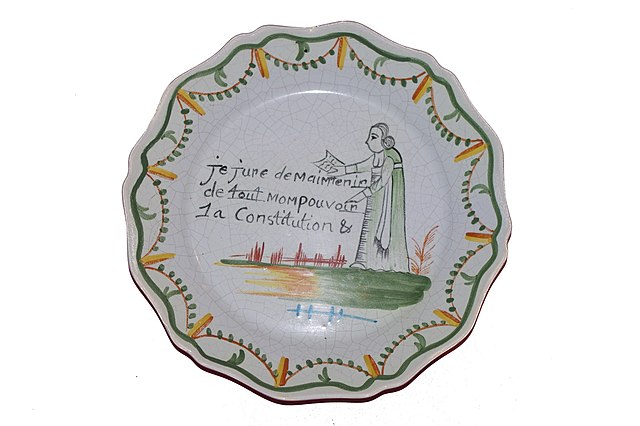The term "Red Priests" or "Philosopher Priests" is a modern historiographical term that refers to Catholic priests who, to varying degrees, supported the French Revolution (1789-1799). The term "Red Priests" was coined in 1901 by Gilbert Brégail and later adopted by Edmond Campagnac. However, it is anachronistic because the color red, associated with socialist movements since 1848, did not signify supporters of the French Revolution, who were referred to as "Blues" during the civil wars of 1793–1799, in contrast to the royalist "Whites." Hence, a recent historian suggested using the term "Philosopher Priests" to describe this group, a term used at the time to refer to these priests.
Cahier de doléances of Saint-Louis du Sénégal
The Tennis Court Oath by Jacques-Louis David (1791), depicting in the center, in the foreground, the priest Henri Grégoire, the Carthusian monk Dom Gerle, and the Protestant pastor Rabaut-Saint-Étienne embracing.
Portrait of Abbé Grégoire by Pierre Joseph Célestin François (1800), Museum of Lorraine, Nancy.
A 'jureur' (meaning supporting the Civil Constitution of the Clergy) priest on a plate from the French Revolution/beginning of the 19th century
Jacques Roux was a radical Roman Catholic Red priest who took an active role in politics during the French Revolution. He skillfully expounded the ideals of popular democracy and classless society to crowds of Parisian sans-culottes, working class wage earners and shopkeepers, radicalizing them into a revolutionary force. He became a leader of a popular far-left.
Jacques Roux





